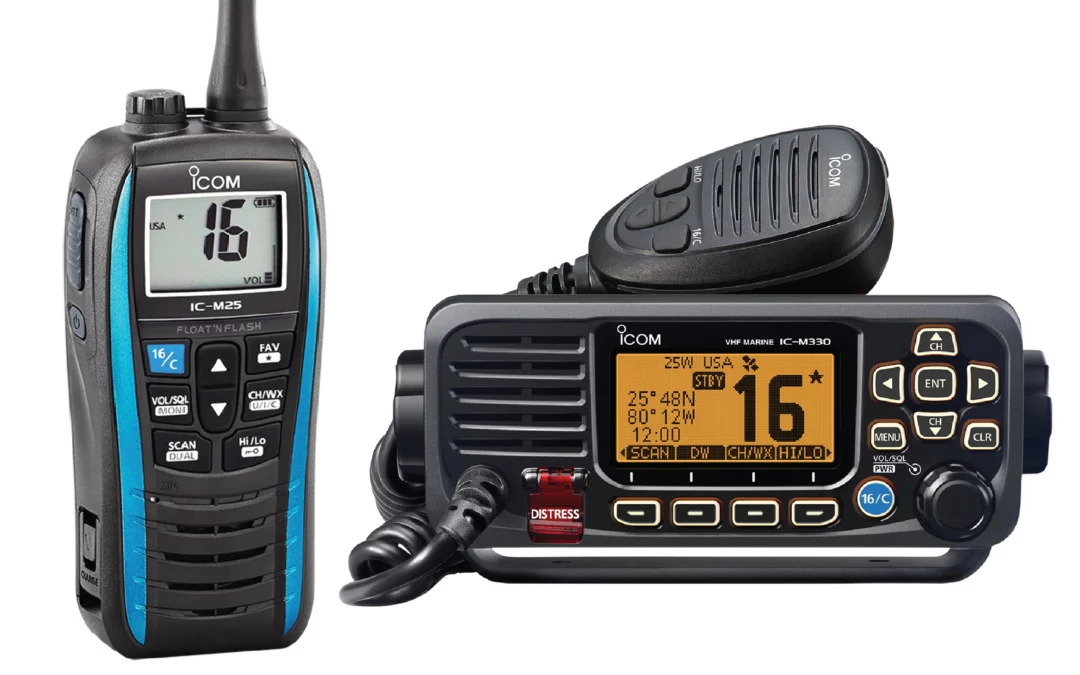
by Barani Chettiar | Apr 13, 2024 | Uncategorized
Importance of Marine Radios in Boating Safety
Navigating the open waters demands clear and reliable communication, making marine radios an indispensable tool for boating safety. Whether you’re a seasoned sailor or a casual boater, understanding the differences between handheld and fixed marine radios is crucial in ensuring you choose the right communication equipment for your needs. In this article, we’ll delve into the characteristics, advantages, and considerations of both types to help you make an informed decision.
Handheld Marine Radios: Portable and Versatile Communication Tool
Handheld marine radios are the go-to choice for boaters who prioritize portability and versatility. These compact devices can be easily carried on board or even taken ashore, providing a convenient means of communication wherever you go. Ideal for short-range communications, handheld radios are perfect for small vessels, dinghies, or situations where mobility is key. Their user-friendly interface and lightweight design make them a popular choice for recreational boaters and those who may need to communicate on land.
Fixed Marine Radios: Mounted on Boats for Constant Communication
Fixed marine radios, on the other hand, are permanently mounted on boats, offering constant and reliable communication. Designed for long-range communication, fixed radios are equipped with more powerful transmitters and larger antennas. These radios are the preferred choice for larger vessels covering greater distances, ensuring a consistent signal even in challenging conditions. The fixed installation also allows for integration with other navigation equipment, providing a seamless communication system for comprehensive on-water operations.
Range and Coverage: Differences in Signal Reach and Reliability
One of the primary distinctions between handheld and fixed marine radios lies in their range and coverage capabilities. Handheld radios are typically designed for shorter distances, making them suitable for close-quarter communication within a vessel or between nearby boats. In contrast, fixed radios boast a more extensive range, allowing for communication over larger expanses of water. This difference is a crucial factor to consider based on the size of your vessel and the distances you plan to cover during your maritime journeys.
Power Source: Battery-Operated vs. Wired Connection
Power source considerations are integral when choosing between handheld and fixed marine radios. Handheld radios are generally battery-operated, offering flexibility and mobility. It’s essential to carry spare batteries or have a reliable charging solution for extended trips. On the other hand, fixed marine radios are typically wired to the boat’s power supply, eliminating concerns about battery life during prolonged use. This distinction highlights the need to evaluate your boating habits and preferences to determine the most suitable power source for your communication needs.
Features and Functions: Comparison of Capabilities for Communication Needs
Both handheld and fixed marine radios come equipped with essential features such as weather channels, emergency alerts, and the ability to communicate on standard maritime frequencies. However, fixed radios often offer additional functionalities like Digital Selective Calling (DSC), which facilitates automated distress calls and position sharing. When comparing features, assess your specific communication requirements, considering factors like GPS integration, weatherproofing, and ease of use.
Pros and Cons: Benefits and Limitations of Each Type
Understanding the advantages and limitations of handheld and fixed marine radios is crucial for making an informed decision. Handheld radios offer portability, versatility, and ease of use but may have limited range and shorter battery life. Fixed radios provide robust, constant communication over longer distances but require professional installation and lack the mobility of handheld options. Consider your boating style, vessel size, and communication priorities to determine which set of benefits aligns best with your needs.
Choosing the Right Radio: Factors to Consider When Selecting a Marine Radio
Selecting the right marine radio involves evaluating several factors. Consider the size of your vessel, the range you intend to cover, your power preferences, and the specific features that align with your communication needs. Additionally, factor in your budget and willingness to invest in either a handheld or fixed radio system. Making an informed decision ensures you have reliable communication equipment tailored to your boating adventures.
Understanding the Right Marine Radio for You
In the world of boating, communication is the key to safety and success. Understanding the nuances between handheld and fixed marine radios empowers boaters to make informed decisions based on their specific needs and preferences. Whether you prioritize portability and versatility or constant, long-range communication, the right marine radio can enhance your on-water experiences and contribute to a safer maritime journey.
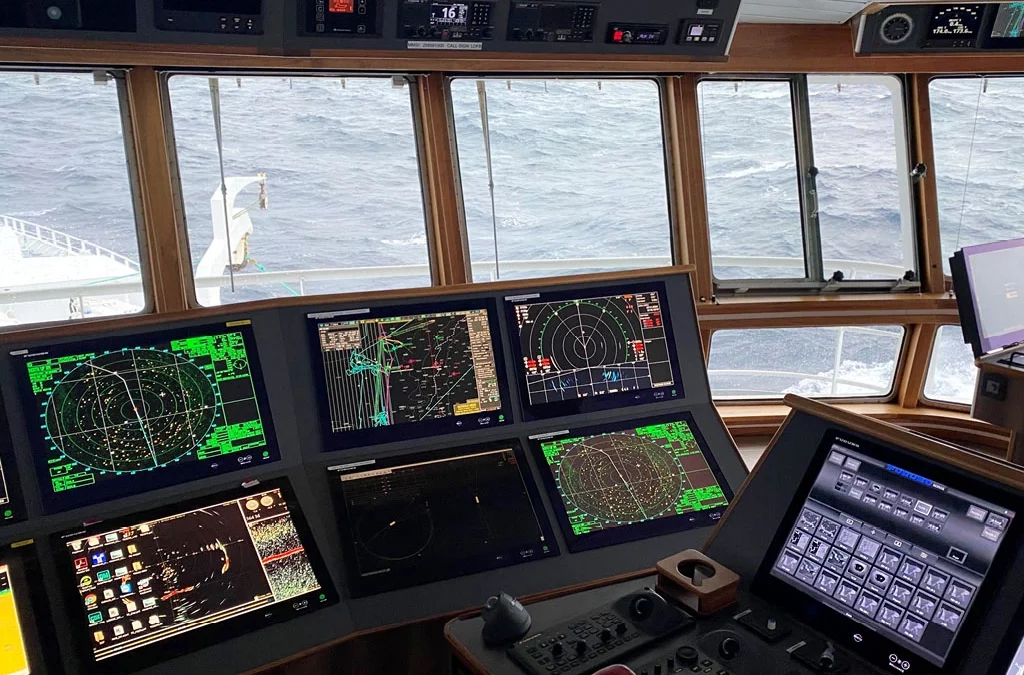
by Barani Chettiar | Apr 12, 2024 | Uncategorized
Navigational tools are the backbone of commercial fishing, playing a pivotal role in ensuring safety and efficiency at sea. Among these tools, navigational charts and maps stand out as indispensable assets for a successful fishing expedition. In this article, we delve into the importance of these tools, explore the types of navigational charts available, discuss how to read nautical maps effectively, highlight the role of technology in navigation, emphasize the benefits of local knowledge, and provide insights into planning routes for the best catches.
Importance of Navigational Tools
For commercial fishermen, navigational tools are not merely accessories; they are lifelines ensuring the safety of both crew and vessel. Accurate charts and maps are crucial for plotting courses, avoiding hazards, and determining the best fishing spots. In the unpredictable marine environment, where weather conditions can change rapidly, relying on navigational tools is essential for making informed decisions and ensuring a successful fishing venture.
Types of Navigational Charts
Navigational charts come in two primary forms: electronic charts and traditional paper charts. Electronic charts, powered by GPS technology, offer real-time data and ease of use. On the other hand, paper charts provide a tangible backup and are often favored by experienced fishermen who appreciate the tactile nature of traditional navigation. The choice between electronic and paper charts often depends on personal preference, with many opting for a combination of both for redundancy.
How to Read Nautical Maps
Understanding how to interpret nautical maps is a fundamental skill for any commercial fisherman. Nautical maps are rich with symbols, depths, and features that convey critical information about the underwater landscape. Fishermen must familiarize themselves with symbols representing buoys, navigational aids, and potential hazards. Additionally, understanding contour lines and depth markings is essential for identifying promising fishing grounds and avoiding dangerous areas.
Using Technology in Navigation
In the modern era, technology has revolutionized navigation for commercial fishermen. Global Positioning System (GPS) devices, sonar systems, and fish finders provide invaluable assistance in locating fish and navigating complex waterways. GPS devices offer precise location information, while sonar and fish finders help identify underwater structures and fish schools. Integrating these technologies into navigation strategies significantly enhances the efficiency and success of commercial fishing operations.
Benefits of Local Knowledge
While advanced technology has its merits, the value of traditional, local knowledge should not be underestimated. Experienced fishermen often possess insights into the intricacies of specific fishing grounds, including seasonal fish movements, underwater topography, and local weather patterns. Collaborating with local fishermen and incorporating their knowledge into navigation plans can lead to more productive fishing trips and a deeper understanding of the marine environment.
Planning Routes for Best Catches
Strategic planning of fishing routes is a key element of commercial fishing success. Navigational charts and maps facilitate the identification of potential hotspots, taking into account factors such as water depth, temperature, and underwater structures. By analyzing this information, fishermen can optimize their routes to increase the likelihood of successful catches and minimize time spent in less productive areas.
Navigational Tools Crucial for Fishing Prosperity
In conclusion, navigational charts and maps are indispensable tools for commercial fishermen seeking success on the open waters. The importance of these tools for safety, efficiency, and strategic planning cannot be overstated. Whether utilizing electronic charts, traditional paper charts, or a combination of both, integrating technology with local knowledge ensures a comprehensive approach to navigation, leading to prosperous and fruitful commercial fishing endeavors.
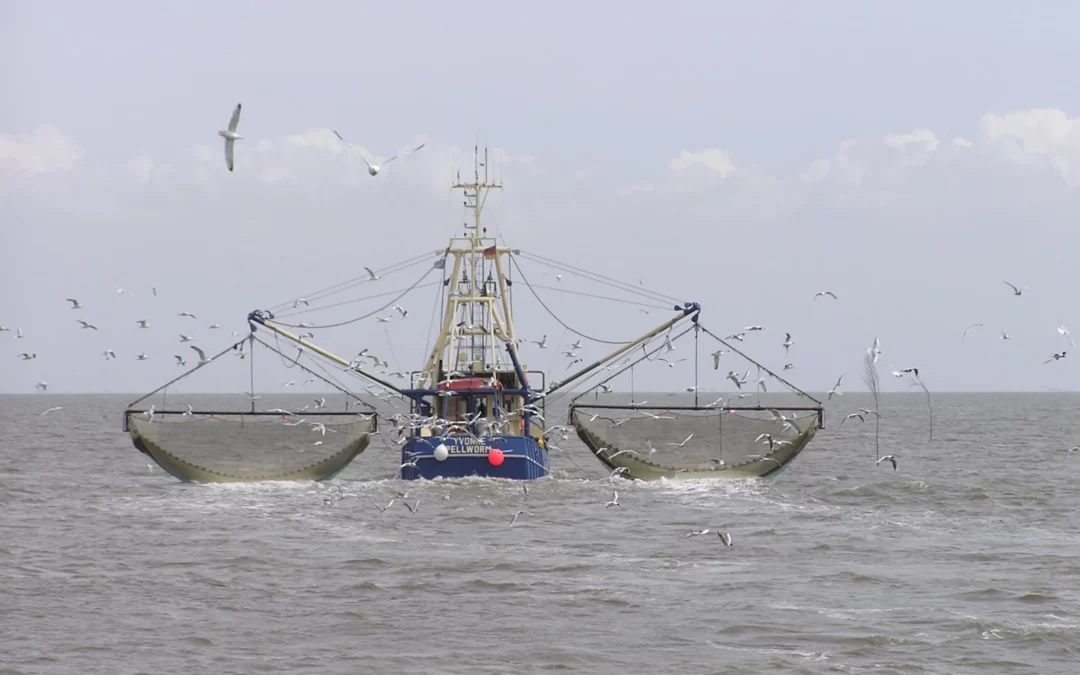
by Barani Chettiar | Apr 11, 2024 | Uncategorized
Importance of Marine Radios in Fisheries
In the dynamic and challenging world of fisheries, effective communication and surveillance are essential for sustainable management. Marine radios play a pivotal role in facilitating communication among fishing vessels, monitoring illegal fishing activities, integrating with surveillance systems for enhanced monitoring, and supporting emergency response and search & rescue operations. This article delves into the multifaceted role of marine radios in fisheries management and surveillance.
Role in Communication Among Fishing Vessels
Communication is the backbone of successful fisheries management, enabling coordination and collaboration among fishing vessels. Marine radios provide a reliable and immediate means of communication at sea, allowing vessels to share information about their location, catch sizes, and potential challenges. This real-time communication fosters efficient decision-making, aids in avoiding collisions, and contributes to the overall safety and productivity of fishing operations.
Aid in Monitoring Illegal Fishing Activities
Illegal, unreported, and unregulated (IUU) fishing pose significant threats to the sustainability of marine resources. Marine radios play a crucial role in monitoring and combating such activities. Fishing vessels equipped with radios can report suspicious behavior, communicate with authorities, and participate in coordinated efforts to deter illegal fishing. The ability to quickly share information about unauthorized activities enhances the effectiveness of surveillance and enforcement measures, contributing to the conservation of fish stocks.
Integration with Surveillance Systems for Enhanced Monitoring
The integration of marine radios with advanced surveillance systems further amplifies their impact on fisheries management. Automated identification systems (AIS) and vessel monitoring systems (VMS) can be linked with marine radios to provide comprehensive monitoring capabilities. This integration allows authorities to track vessel movements, verify compliance with fishing regulations, and promptly respond to any deviations or suspicious activities. The synergy between marine radios and surveillance systems enhances the overall efficiency of fisheries management strategies.
Emergency Response and Search & Rescue Operations
In the unpredictable marine environment, emergencies can arise, necessitating swift and effective responses. Marine radios serve as crucial tools in emergency situations, enabling distressed vessels to communicate their position, request assistance, and coordinate search & rescue operations. The use of standardized distress frequencies, such as Channel 16 on VHF radios, ensures that distress calls are quickly and reliably transmitted, facilitating rapid response from nearby vessels or maritime authorities.
Regulations and Requirements for Radio Use
The use of marine radios in fisheries is subject to international regulations and guidelines to maintain a standardized approach and ensure effective communication. The International Telecommunication Union (ITU) and the International Maritime Organization (IMO) establish rules governing radio frequencies, equipment specifications, and operational procedures. Fisheries authorities may also implement specific regulations to address the unique communication needs of their regions. Compliance with these regulations is essential for fostering a coordinated and secure communication environment in fisheries.
Marine Radios Crucial for Sustainable Fisheries Management
In conclusion, marine radios play a pivotal role in the multifaceted arena of fisheries management and surveillance. From facilitating communication among fishing vessels to aiding in monitoring illegal activities, integrating with advanced surveillance systems, and supporting emergency response and search & rescue operations, marine radios are indispensable tools in ensuring the sustainability of marine resources. The adherence to regulations and requirements for radio use further underscores the importance of a standardized and efficient communication framework. By embracing the multifunctional capabilities of marine radios, fisheries can be managed more effectively, promoting responsible practices and contributing to the long-term health and viability of marine ecosystems.
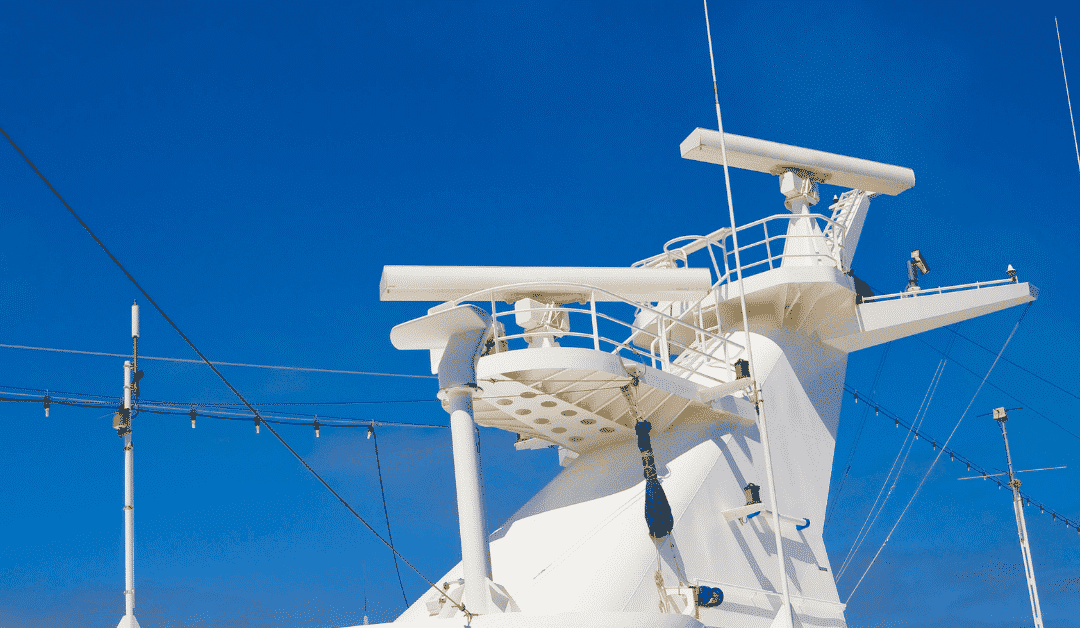
by Barani Chettiar | Apr 10, 2024 | Uncategorized
Navigating the open seas is a complex endeavor that demands precision and safety. In this challenging environment, marine radars emerge as crucial tools for sailors, playing a pivotal role in navigation and collision avoidance. This article explores the significance of marine radars, their importance in navigation, collision avoidance features, different types available, regulations, best practices, and offers a glimpse into the future trends shaping marine radar technology.
Overview of Marine Radars
Marine radars are advanced electronic systems designed to detect and locate objects in the vicinity of a vessel. Using radio waves, these radars emit signals that bounce off objects, providing real-time information about their distance, direction, and speed. This capability is invaluable for sailors, offering enhanced situational awareness and aiding in safe navigation, especially in adverse weather conditions or low visibility scenarios.
Importance in Navigation
The primary role of marine radars is to provide navigators with a clear picture of their surroundings, allowing them to identify potential obstacles, other vessels, and navigational aids. This information is vital for charting a safe course, especially when approaching shorelines, navigating through congested waterways, or dealing with poor weather conditions. Marine radars significantly contribute to overall navigation safety, enabling sailors to make informed decisions and avoid collisions.
Collision Avoidance Features
Marine radars are equipped with advanced features specifically designed to enhance collision avoidance. Automatic Radar Plotting Aid (ARPA) is a noteworthy feature that tracks the movements of other vessels, predicts their future positions, and assesses potential collision risks. Alarms and alerts are triggered when a potential hazard is detected, prompting the navigator to take corrective action. These features are critical in preventing accidents at sea and ensuring the safety of both the vessel and its crew.
Types of Marine Radars
There are various types of marine radars available, each catering to specific needs and vessel sizes. X-band and S-band radars are the most common, with X-band being suitable for smaller vessels and S-band for larger ones. Doppler radar, another variant, provides additional information on the speed and direction of moving targets. Dual-range radars offer the advantage of displaying information from two radar antennas simultaneously, providing a comprehensive view of the surroundings.
Regulations and Best Practices
The use of marine radars is governed by international regulations and best practices to maintain a standardized approach to navigation and safety. The International Maritime Organization (IMO) sets guidelines for the use of radars at sea, covering aspects such as radar installation, maintenance, and operational procedures. Best practices include regular radar checks, calibration, and training for navigators to ensure optimal use of radar systems for safe navigation.
Future Trends in Marine Radar Technology
As technology continues to advance, the future of marine radar holds exciting possibilities. Integration with other navigation systems, such as Electronic Chart Display and Information Systems (ECDIS), promises a more holistic approach to maritime safety. Further developments in automation and artificial intelligence may enhance the capabilities of collision avoidance features, providing even more accurate predictions and reducing the burden on navigators.
Conclusion: Key Role in Maritime Safety
In conclusion, marine radars play a key role in ensuring the safety of maritime navigation. Their ability to provide real-time information about the surroundings, coupled with advanced collision avoidance features, makes them indispensable for sailors. The various types of marine radars cater to different vessel sizes and requirements, and adherence to international regulations and best practices is essential for their effective use. As we look to the future, ongoing technological advancements promise to further enhance the capabilities of marine radar systems, reinforcing their crucial role in maintaining maritime safety.
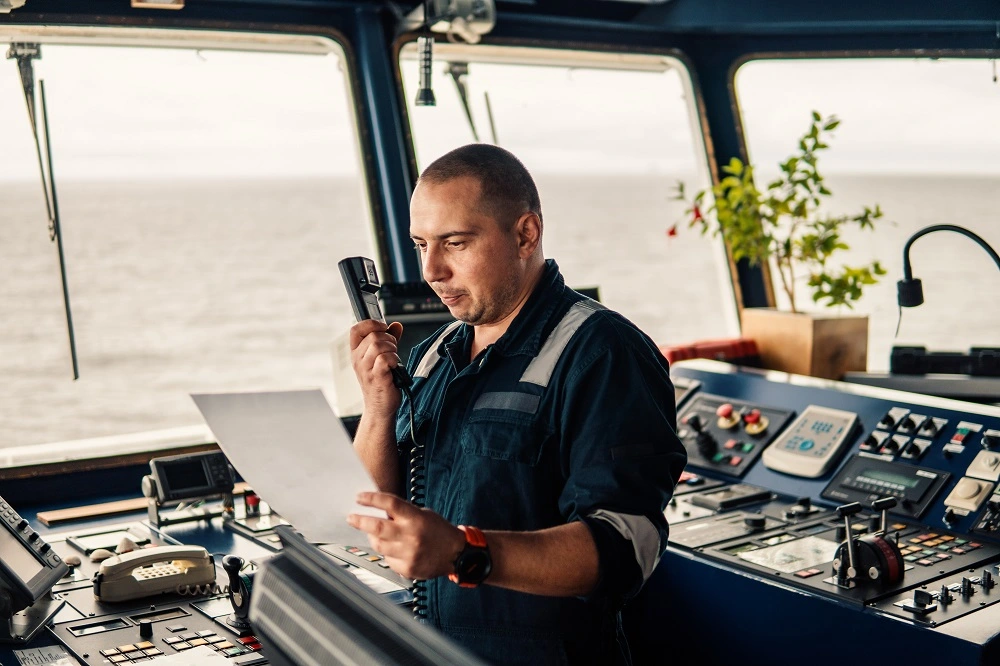
by Barani Chettiar | Apr 9, 2024 | Uncategorized
Effective communication is the cornerstone of maritime safety, and for commercial vessels, radio checks and tests are paramount. This article delves into the importance of radio checks, the equipment needed for tests, the process of conducting routine radio checks, emergency communication protocols, interpreting test results, troubleshooting common issues, and concludes with the significance of ensuring radio safety at sea.
Importance of Radio Checks
The importance of radio checks cannot be overstated in the maritime industry. Reliable communication is essential for coordinating movements, avoiding collisions, and responding to emergencies. Regular radio checks ensure that communication equipment is in optimal condition, reducing the risk of communication failure when it matters most. For commercial vessels, where the stakes are high, conducting radio checks is a proactive measure that enhances overall safety at sea.
Equipment Needed for Radio Tests
To conduct radio checks effectively, commercial vessels need essential equipment. The primary tool is, of course, the radio communication system. This includes the very high-frequency (VHF) radio commonly used for short-range communication. Additionally, vessels may have single sideband (SSB) radios for long-range communication. Ensuring that all microphones, antennas, and power sources are in good working order is crucial for accurate testing.
Conducting Routine Radio Checks
Routine radio checks should be a standard practice for commercial vessels before embarking on any journey. To perform a radio check:
- Select a designated frequency: Choose a frequency that is commonly used for radio checks in your region.
- Transmit a test call: Make a brief, standardized test call to ensure that the radio is transmitting properly.
- Listen for a response: Check for replies from other vessels or shore stations, confirming that your transmissions are being received.
Routine checks should also include verifying the clarity of communication, checking for any unusual background noise, and confirming the functionality of emergency channels.
Emergency Communication Protocols
In emergency situations, efficient communication can be a matter of life or death. Commercial vessels must establish and practice emergency communication protocols. This includes using designated distress frequencies, such as Channel 16 on VHF radios, and clearly communicating the nature of the emergency. Regular drills and training ensure that the crew is well-versed in emergency procedures, reducing response time during critical situations.
Interpreting Test Results
Interpreting test results is a crucial step in maintaining radio communication reliability. A successful radio check involves clear, audible transmissions and positive responses from others on the designated frequency. If issues arise during routine checks, further investigation is required. Test results should be logged, and any discrepancies or abnormalities should be addressed promptly to ensure that communication equipment remains in optimal condition.
Troubleshooting Common Issues
When conducting radio tests, it’s not uncommon to encounter issues. Common problems include poor signal strength, distorted transmissions, or complete radio failure. Troubleshooting steps may involve checking antenna connections, inspecting cables for damage, or assessing power sources. Routine maintenance, such as cleaning and inspecting antennas, can prevent many common issues. In cases where troubleshooting onboard does not resolve the problem, seeking professional assistance is imperative.
Ensuring Radio Safety at Sea
In conclusion, the importance of radio checks and tests for commercial vessels cannot be emphasized enough. Regular checks not only ensure that communication equipment is in optimal condition but also contribute to overall maritime safety. Equipping vessels with the necessary tools, following routine radio check procedures, establishing emergency communication protocols, interpreting test results, and promptly addressing issues through troubleshooting are vital steps in maintaining reliable radio communication. By prioritizing radio safety, commercial vessels enhance their ability to navigate and communicate effectively, ensuring the well-being of both crew and vessel in the unpredictable maritime environment.





